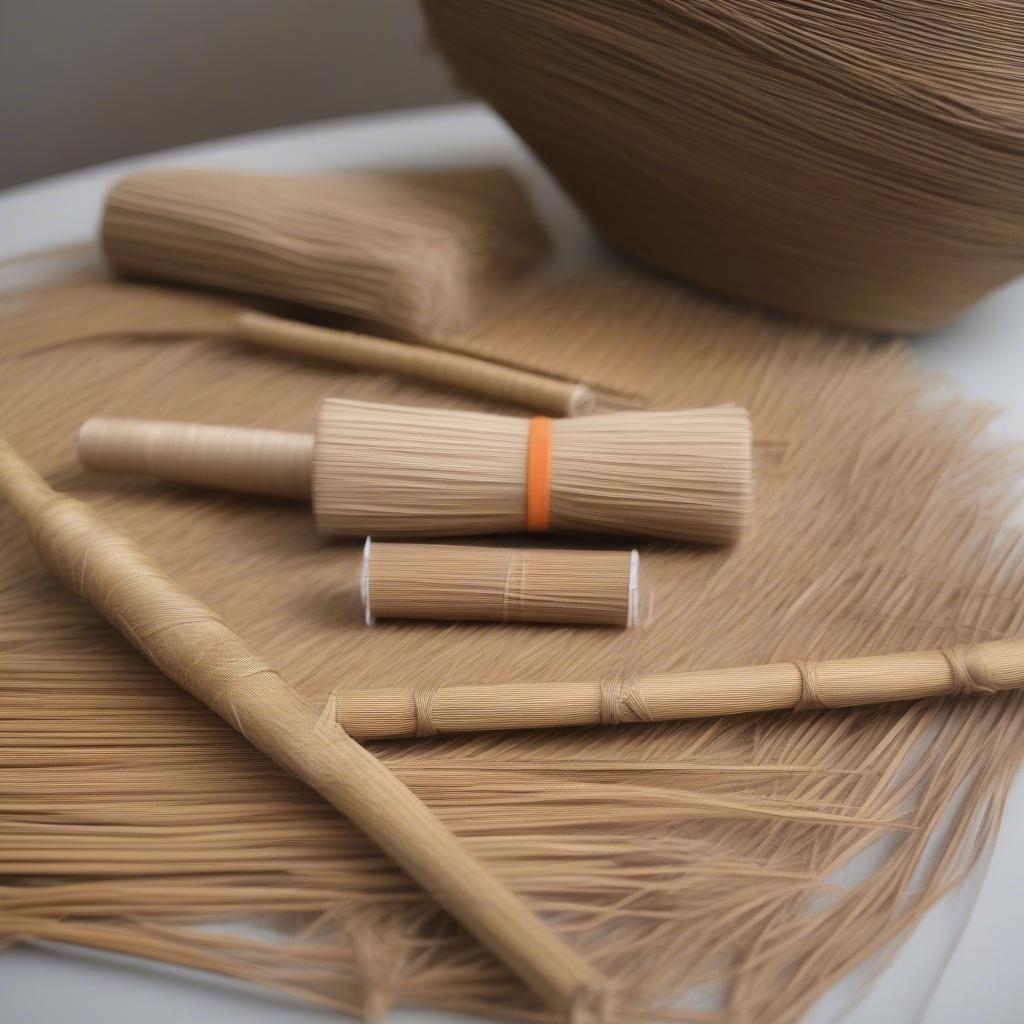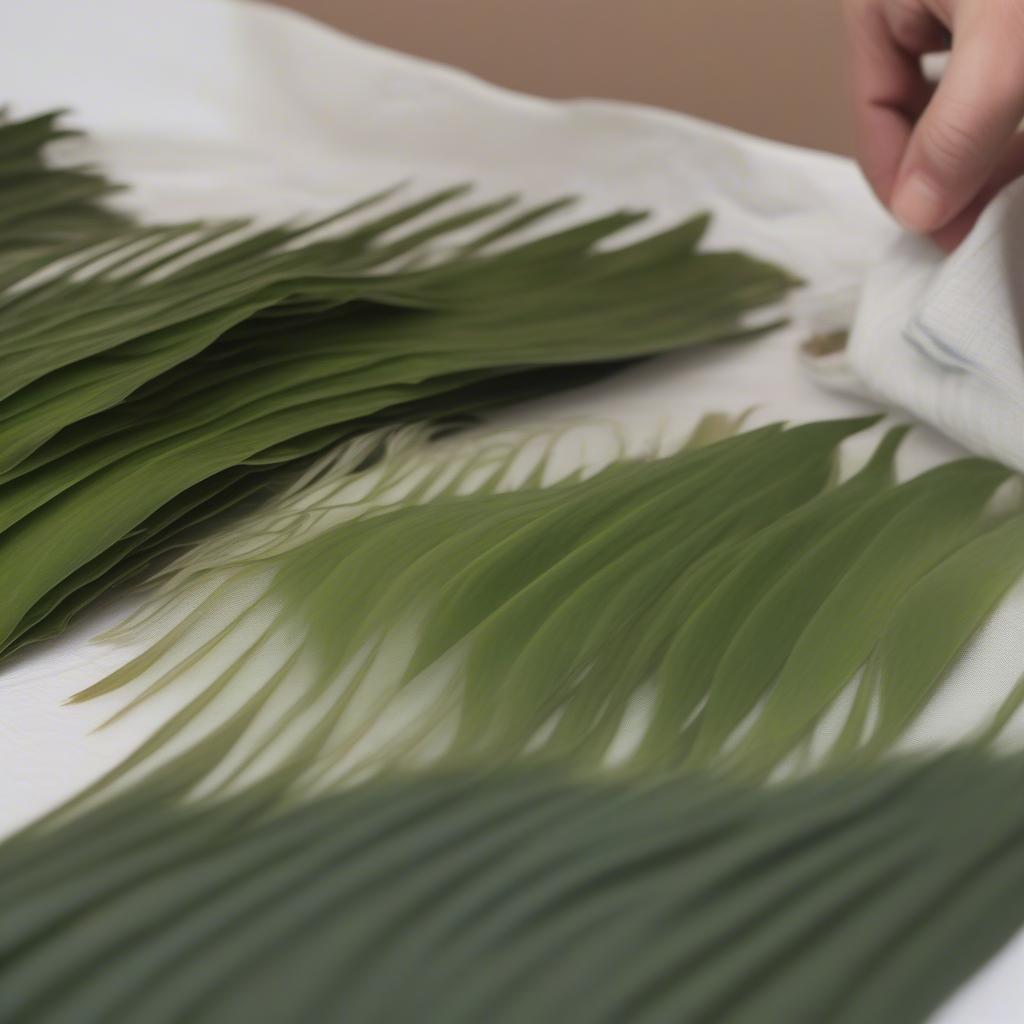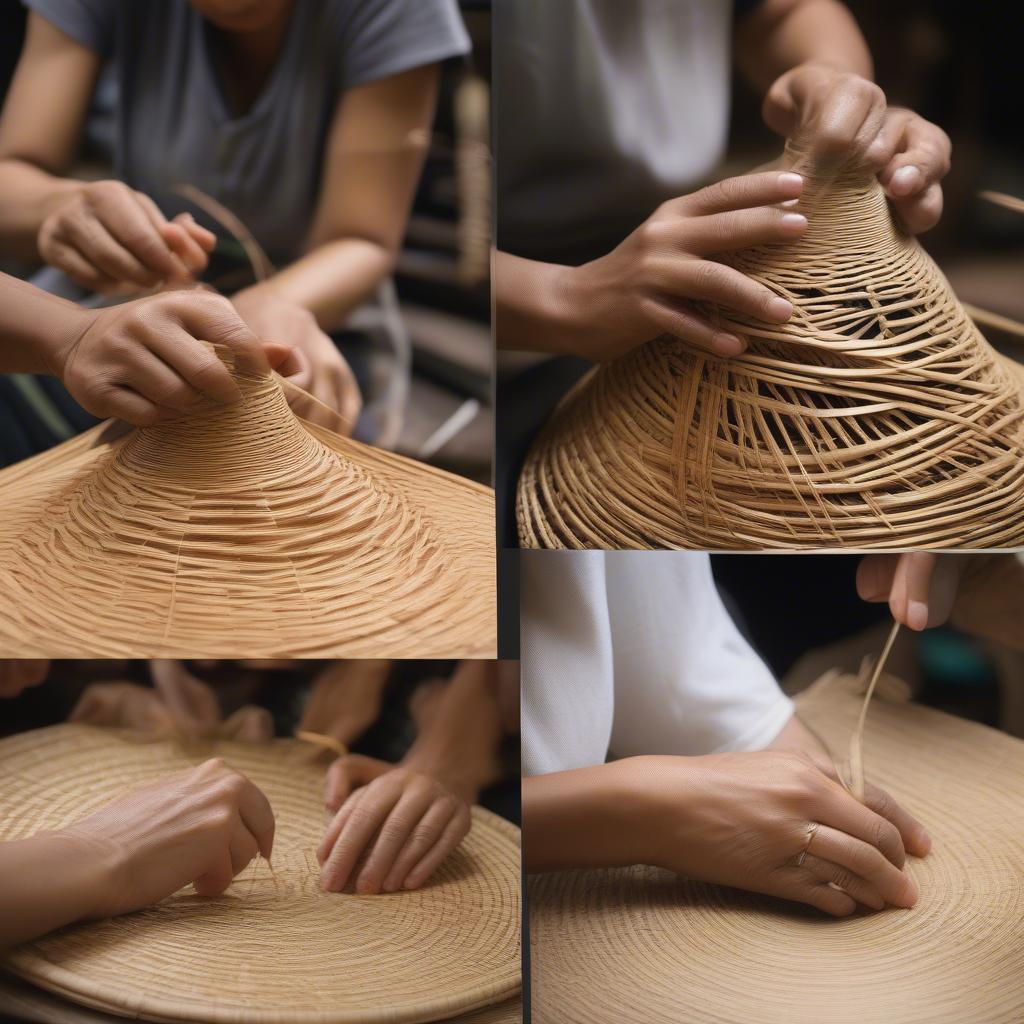Weave Hat
How to Weave a Vietnamese Hat
Learning How To Weave A Vietnamese Hat, also known as a nón lá, is a journey into a rich cultural tradition. This iconic headwear, more than just sun protection, represents a blend of artistry and practicality deeply embedded in Vietnamese life. This guide will take you through the steps involved in crafting your own nón lá, exploring the materials, techniques, and the cultural significance woven into each layer.
Choosing Your Materials for a Vietnamese Hat
The foundation of any good nón lá lies in the quality of its materials. Traditionally, palm leaves are used, specifically those from the lá cọ palm. These leaves are carefully selected, dried, and treated to achieve the desired flexibility and durability.
- Palm Leaves (lá cọ): The quintessential material for a nón lá. Look for leaves that are smooth, blemish-free, and have a consistent color.
- Bamboo Slats: These form the frame of the hat, providing structure and shape. Choose thin, yet sturdy slats that can be easily bent.
- Nylon Thread: Used for sewing the leaves onto the bamboo frame. Opt for a strong, weather-resistant thread.
- Conical Mold: This is essential for shaping the hat as you weave. You can find pre-made molds or create your own using cardboard or other sturdy materials.
 Essential Materials for Weaving a Vietnamese Hat
Essential Materials for Weaving a Vietnamese Hat
Preparing the Palm Leaves
Before weaving can begin, the palm leaves need to be prepared. This involves drying, ironing, and sometimes dyeing the leaves to achieve the desired color and texture. The drying process ensures the leaves are pliable and less prone to tearing. Ironing helps to flatten them, making them easier to work with.
- Drying: Spread the leaves out in a well-ventilated area, away from direct sunlight, for several days.
- Ironing: Once dried, carefully iron the leaves on a low setting to smooth them out.
- Dyeing (Optional): If you want to add color, you can dye the leaves using natural dyes or fabric dye.
 Preparing Palm Leaves for Vietnamese Hat Weaving
Preparing Palm Leaves for Vietnamese Hat Weaving
Constructing the Bamboo Frame
The bamboo frame serves as the skeleton of the hat. It’s constructed using thin bamboo slats that are bent and tied together to form a conical shape. The size and shape of the frame will determine the final dimensions of the nón lá.
- Measuring and Cutting: Measure and cut the bamboo slats to the desired length, ensuring they are long enough to form the cone.
- Bending and Shaping: Carefully bend the slats into a conical shape, securing them together with thread.
- Reinforcing: Add extra slats and ties to reinforce the frame and ensure its stability.
Weaving the Hat
This is where the artistry truly comes to life. Using the prepared palm leaves and the bamboo frame, you begin the meticulous process of weaving. The leaves are layered and sewn onto the frame, creating the distinctive conical shape and intricate patterns of the nón lá.
- Layering: Start by layering the palm leaves onto the frame, overlapping them slightly.
- Sewing: Secure the leaves to the frame using nylon thread, working your way from the bottom to the top.
- Shaping: Use the conical mold to maintain the shape of the hat as you weave.
Finishing Touches and Decoration
Once the weaving is complete, it’s time to add the finishing touches. This may include trimming any excess leaves, adding a decorative band around the brim, or applying a waterproof coating to protect the hat from the elements.
- Trimming: Trim any excess leaves or thread to create a clean, finished look.
- Decorative Band: Add a ribbon or decorative band around the brim to enhance the hat’s aesthetic appeal.
- Waterproof Coating (Optional): Applying a waterproof coating can help protect the hat from rain and sun damage.
 Weaving a Vietnamese Hat: A Step-by-Step Guide
Weaving a Vietnamese Hat: A Step-by-Step Guide
Conclusion: Your Own Vietnamese Hat Masterpiece
Learning how to weave a Vietnamese hat is a rewarding experience, connecting you to a centuries-old tradition. By following these steps, you can create your own beautiful and functional nón lá, a symbol of Vietnamese culture and craftsmanship.
FAQ
- What type of palm leaves are best for making a nón lá? Traditionally, lá cọ palm leaves are used.
- How long does it take to weave a Vietnamese hat? The time can vary depending on skill level and intricacy, but it can take several hours or even days.
- Can I use other materials besides bamboo for the frame? While bamboo is traditional, other flexible and sturdy materials could potentially be used.
- How do I care for my nón lá? Store it in a cool, dry place away from direct sunlight.
- Where can I find materials for making a Vietnamese hat? You may be able to find materials at craft stores or online retailers specializing in Asian crafts.
Need more help? Contact our Hotline: +84 388 951 999, located in Hanoi, Vietnam, or at Tech Avenue, Suite 12, San Francisco, CA 94105, USA. We offer 24/7 customer support. You can also explore other related articles on our website for further information.
